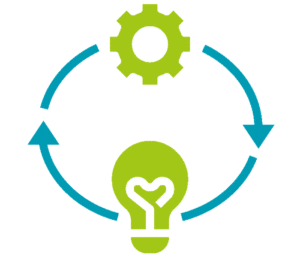Data Management – Essential for all studies including eCOA
In a perfect world, you would choose your Clinical Outcome Assessments (COAs), write your statistical analysis plan (SAP), license your COAs, get them translated, put them into an eCOA software, and let the study run. Every patient, site, and caregiver would fill out each questionnaire perfectly, you’d finish your study, and a clean database would be returned to you.
Unfortunately, being human means that the way the data is completed can create inconsistencies, issues, and more questions than you had perhaps anticipated. That is why it is essential to consider data management from the very start of each study.
Getting Set Up: Data Management Mindset

Once you have the contract signed and the protocol is shared, our Data Manager (DM) will start to review with the team. Data Managers have that eye for detail that is crucial for detecting risks and how to anticipate them. They will ask some important questions:
- What do you want to do with the data you receive?
- What are your biostatisticians expectations?
- What does a clean database look like for them?
A Data Manager will be assigned to your study and will join from the very start – during the Kickoff Meeting. They will tackle these questions and more, and will encourage an open discussion so they can make sure everyone is on the same page regarding expectations for the data.
Set Up/Implementation Phase: Data Management guarantees that we think of all the “what ifs!”

The Data Manager drafts the study specific documentation based on what you have previously discussed. The documents are then reviewed and approved by you before the start of the study.
There are two main documents for data management:
- The Data Management Plan describes the Data Manager activities.
- The Data Cleaning Plan details the data controls.
All edit checks are programmed and validated during the implementation phase.
The Data Manager defines:
- Which data can be updated.
- Which profiles are allowed to update data.
All of these elements are discussed in detail with you and confirmed during the Set-Up Phase of the study.
Go Live! Data Management never sleeps

Once the study goes live and sites are set up, patients are recruited, our data managers are ready. The lead Data Manager who is dedicated to your study works with their team to keep monitoring the data as it comes in, detect incoherencies, and resolves each incoherency based on all the requirements and agreements that have been agreed to upfront.
- Edit checks automatically raise flags on our Clin’form portal (Missing data, duplicates, chronological issues, etc.)
- Notifications for new queries and reminders for pending queries are sent to the investigator/site staff.
- Kayentis Data Managers monitor all queries on our Clin’form portal.
- Data changes are quality controlled and audit trailed.
– Sites can ask for data changes by sending a Data Correction Request via the Web Portal.
– Kayentis’ Data Manager reviews each request to ensure the data change request is allowed before performing the update.
– Unauthorized data changes considered as necessary by site or resulting from a subject’s request are escalated and reviewed with you for recommendation on how to proceed.
– A note to file must be agreed upon and signed by your team and Kayentis’ Quality Assurance, before performing the related previously unauthorized updates.
- Data transfer files are generated automatically by the validated export module of Clin’form.
- The Kayentis Data Manager then delivers the data files to your portal
Closing the study: Database Lock & rigorous data checks

Your study is finally coming to a close and the final database transfer and database lock is imminent. Luckily, thanks to our rigorous data management, throughout the study you will receive monthly data transfers. These data transfers will contain all the data cleaned, in the format defined during study set up. When you get to the closing stage of your study, data cleaning and transfer can be ramped up. By that time, you will know what to expect and closing everything out will be easy.
Kayentis’ Project Manager and Data Manager will ensure that a Quality Check Form is completed for each device used to collect patient data, to ensure that all data are transferred into the Clin’form web portal before the last round of Data Management reconciliation. A global quality control is also performed before the final database lock to ensure that the collected data have been handled as expected. The quality control strategy is usually based on sampling, but also defined according to the criticality of the collected data.
After the Database Lock Form has been signed, authorizing Kayentis to perform the database lock, the database lock will be completed within 3 working days maximum.
And that’s that! Simple, right? It can be if you keep in mind data management from the very start and keep on top of everything throughout the study.
If you’d like to learn more – maybe your data managers have questions for our data managers, please don’t hesitate to reach out to us:
Last update : 8 September 2021

